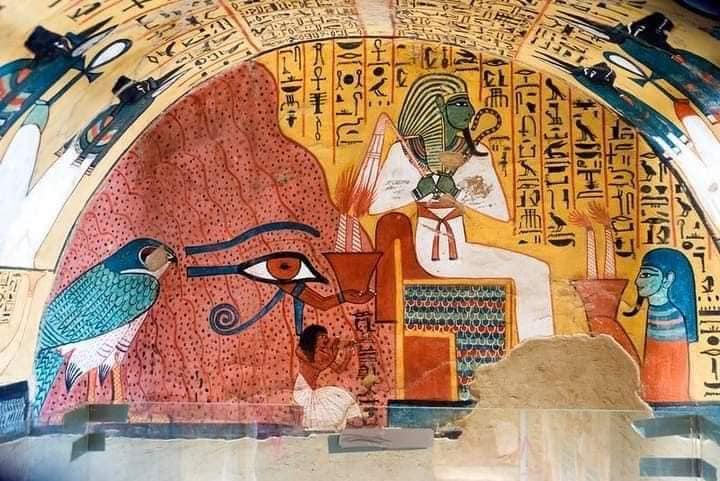Egypt Magic [1566]
Building the city of Cairo
Cairo defines Cairo as the largest and most famous capital of the Arab world, and it is the capital of the Arab Republic of Egypt. Its construction dates back to the Fatimid era, where it was built by Jawhar al-Sicili or (Jawhar al-Rumi) as he was called, and he is the most important and famous of the Fatimid conquerors, and he is the one who built the Al-Azhar Mosque. He also had the upper hand in conquering all of the Maghreb, Egypt, the Levant and even the Hijaz, at the behest of the Fatimid Caliph al-Muizz Li Din Allah, who ordered the construction of the city and its name Cairo. According to the horror of the planet Mars that appeared before the start of its construction; Where he is known as Cairo.
Jawhar Al-Skali, builder of Cairo
Jawhar al-Siqali is Abu al-Hasan Jawhar bin Abdullah; he was born in the Italian island of Sicily, which was one of the principalities of the Fatimid state in the year nine hundred and twenty-eight AD, corresponding to the year of three hundred and sixteen AH, and he came to Egypt as a small child at the time of al-Mansur in God and grew up in the city Mahdia. In his youth, he joined the ranks of the Fatimid army, shone his star, and surpassed his peers, until he became the commander of the Fatimid forces during the reign of the Caliph Al-Muizz Li Din Allah, who ruled Egypt for four years on his behalf, just as his status increased during the reign of the Al-Aziz Caliph, who succeeded Al-Muizz God’s Religion.
Building the city of Cairo
On the day when the essence of the Sicilians arrived with his soldiers to Fustat (Egypt) from Giza, he fulfilled the demand of the Caliph Al-Muizz. He dug the foundations of the city in the year three hundred and fifty-eight of the Hijra. He descended in the plain sandwiched between Mount Mokattam and the Gulf, and it included at that time orchard al-Kafoury. A monastery The bones, which replaced the Al-Aqmar Mosque and the Palace of Al-Thorn, built the city wall out of the mud and supplied it with nine gates:
Pope Al-Nasr and Al-Futuh from the north, and Pope Al-Barcia and Al-Quarantine from the east
And three gates from the south are Bab Zuweila, Bab al-Faraj, and two doors from the west side: Bab Saada and Bab al-Qantara. There were ten, and each lane had a door that was closed in the evening, and the guard opened it at the dawn prayer.
Cairo defines Cairo as the largest and most famous capital of the Arab world, and it is the capital of the Arab Republic of Egypt. Its construction dates back to the Fatimid era, where it was built by Jawhar al-Sicili or (Jawhar al-Rumi) as he was called, and he is the most important and famous of the Fatimid conquerors, and he is the one who built the Al-Azhar Mosque. He also had the upper hand in conquering all of the Maghreb, Egypt, the Levant and even the Hijaz, at the behest of the Fatimid Caliph al-Muizz Li Din Allah, who ordered the construction of the city and its name Cairo. According to the horror of the planet Mars that appeared before the start of its construction; Where he is known as Cairo.
Jawhar Al-Skali, builder of Cairo
Jawhar al-Siqali is Abu al-Hasan Jawhar bin Abdullah; he was born in the Italian island of Sicily, which was one of the principalities of the Fatimid state in the year nine hundred and twenty-eight AD, corresponding to the year of three hundred and sixteen AH, and he came to Egypt as a small child at the time of al-Mansur in God and grew up in the city Mahdia. In his youth, he joined the ranks of the Fatimid army, shone his star, and surpassed his peers, until he became the commander of the Fatimid forces during the reign of the Caliph Al-Muizz Li Din Allah, who ruled Egypt for four years on his behalf, just as his status increased during the reign of the Al-Aziz Caliph, who succeeded Al-Muizz God’s Religion.
Building the city of Cairo
On the day when the essence of the Sicilians arrived with his soldiers to Fustat (Egypt) from Giza, he fulfilled the demand of the Caliph Al-Muizz. He dug the foundations of the city in the year three hundred and fifty-eight of the Hijra. He descended in the plain sandwiched between Mount Mokattam and the Gulf, and it included at that time orchard al-Kafoury. A monastery The bones, which replaced the Al-Aqmar Mosque and the Palace of Al-Thorn, built the city wall out of the mud and supplied it with nine gates:
Pope Al-Nasr and Al-Futuh from the north, and Pope Al-Barcia and Al-Quarantine from the east
And three gates from the south are Bab Zuweila, Bab al-Faraj, and two doors from the west side: Bab Saada and Bab al-Qantara. There were ten, and each lane had a door that was closed in the evening, and the guard opened it at the dawn prayer.


Comment (0)